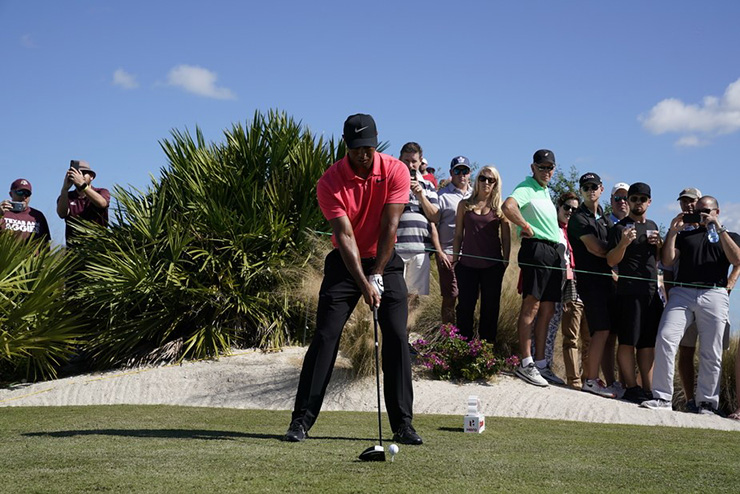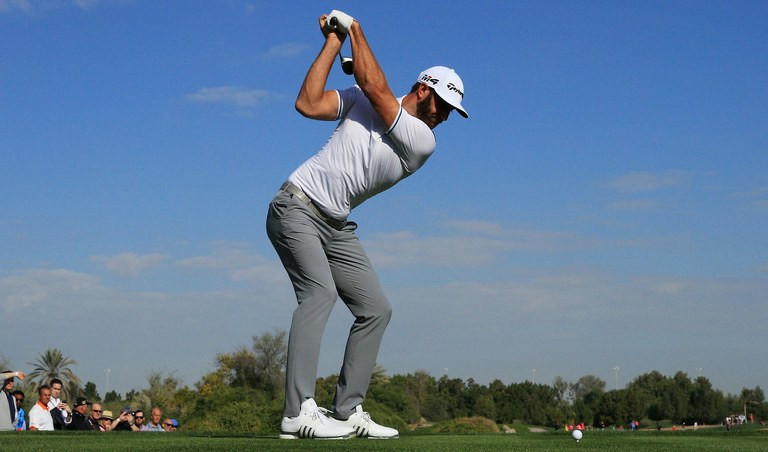Five Tips To Hitting The Perfect Drive - Tour Shop Fresno
Most drivers fall into one of two categories: 1) The bombers who can hit it 300 yards and get “Wow’s” out of their playing competitors...except the ball never goes straight, or 2) The very accurate and straight drivers who find the fairways all the time but are miles behind their playing competitors because they struggle to top 200 yards off the tee. Yes, I know, there’s a third category which is those who can’t hit it straight or long, but most fall into the first two categories.
So how can we hit it long AND straight? Well, it takes practice and some time on the range. But it also takes some tweaks in our swings and finding the perfect driver out there to help us be comfortable in our swings.
I’ve outlined below five things to focus on before heading to the golf course and seeing an uptick in results. By capitalizing on these tips, you can maximize your distance and find the fairways regularly.
1) Put the Ball Up in Your Stance
Most golfers don’t realize that hitting a driver requires a different swing than hitting your irons. With irons, we are more prone to swing down on the ball, while with the driver, we should be coming up on it. The way we come up more is by lining the tee and the ball up with our left foot (or right foot if you are a lefty) or just inside the front heel. By doing this, we are allowing our shoulder to get more under the ball and giving the ball more loft by swinging up at impact, in turn giving us more distance.
If the tee and the ball is more in the middle, you are still swinging down on the ball more and it’s going to be hard to get behind it and loft it up unless you really shift your weight forward fast. Some faster swingers of the ball can do this, but for regular golfers with a slower or average speed swing, they need the tee ball on the front foot. Watch professional golfers. Almost all of them that you see tee the ball on their left foot, as pictured below. You’ll see a big increase in your loft which will give you more distance.

2) Lock Your Wrists and Close the Club Face
This was a major problem I had for the longest time. I was a bomber who always had a slicing problem. I found out that in my club release, my wrists got loose and the ball kept pushing out to the right. I tried to correct the problem by releasing quicker, and only ended up coming on top of it more and hooking it.
I started locking my wrists in more to avoid my hands from taking over my swing too much and keeping it more in my shoulder and arms. As a result, the ball went more straight.
A couple other key points. First, extend your arms out straight when you drive the ball. Release the club when you arms are pointing at the fairway in front of you, arms full extended (see picture below). This avoids the flipping over of the driver which causes a lot of hooks, and by locking in your wrists and releasing at the right time, it should avoid slices.
Also, focus on keeping the club straight from backswing to the ball. Don’t waver as coming on top of it or coming in too shallow can cause wayward shots.
Practice: Swing at 25% a few shots, and then slowly increase your speed each shot after on the range. Focus on keeping the club straight on the backswing and facing the club at the target on the follow through, locking in your wrists and properly releasing. Releasing the club adds more club speed which in turn gives you more distance.
3) Finding the Perfect Driver FOR YOU
A lot of golfers don’t drive the golf ball well because they don’t have the right driver that fits their swing. You need to find the right driver shaft that fits the speed of your swing and the trajectory of your shot. Many amateur golfers and pros alike perform well with Fujikura shafts and highly recommend them. You also need to find the right club head that is comfortable for you. If you have a slower swing, you will want a driver that is lighter and perhaps not as massive as it could make it tougher to get around at impact. Same with the weight of the shaft. You will want a lighter shaft if you have a slower swing. Heavier shafts can make it hard for you to get the driver around.
If you are someone who is very accurate but needs more distance, you will want a driver with a more condensed sweet spot that has deep gravity. If you are struggling with hitting the middle of the driver, you’ll want a face with a bigger sweep spot that allows for more forgiveness for potentially wayward shots.
4) Don’t Try To Kill It
The biggest myth out there is the harder you swing at a golf ball, the more long and straight your shot will be. I don’t think so. Sure, taking the club head back past parallel and putting all your might into it may add 10 yards to your swing, but it could also put the ball in the trees and water more often. You’ll be amazed still how far you can hit the ball by not trying to murder it every time.
TIP: Often times upgrading your golf shafts or other equipment such as grips or heads can help improve a players swing.
Loosen your grip some, make your backswing a little slower and smoother and hit a more a fluid shot, putting enough force in your swing at impact that will it give it some distance. Also, release your club after impact as this adds more speed to your shot and, in essence, more distance. The problem with those that try and swing it so hard is that they move too many body parts that shouldn’t be moving and twisting and that causes slices and hooks in the shot, not to mention the likelihood of missing the sweet spot. Just keep your swing simple. It will still go far if you swing at normal speed, and it will go a lot straighter.
5) Shifting Your Weight
For those looking for more distance, this is one of the biggest reasons for lack of power. Too many golfers hold their weight back. By holding your weight back, you get no force into your shot. The power in our shots come from moving from the back to the front in our downswings. That weight needs to come forward. If you struggle with this, try slightly leaning a bit on your left leg (or right if you are a lefty) just prior to you beginning your backswing. Try and keep that weight on the front as you bring your club back and then thrust forward as you begin your downswing. This will more weight into your shot from the back and give you more distance.
Just be careful of moving too far ahead of the ball as this could cause you to overturn or get caught and miss the ball late, causing a slice. It could also cause you to hit down on the ball (see point number one). Once again, this is something to swing slow on at first and get some reps before swinging at full pace.
Recent Posts
-
Golf Shafts: Stiff vs Regular Flex - Choosing the Right Flex for Your Game
Golf Shafts: Stiff vs Regular Flex - Choosing the Right Flex for Your Game Choosing the right golf …Jul 26th 2024 -
Golf Shafts: Graphite vs Steel - Which is Right for Your Game?
Golf Shafts: Graphite vs Steel - Which is Right for Your Game? When it comes to choosing the right …Jul 26th 2024 -
2024 Golf Shop Hot List: Top Spots for the Best Golf Club Components, Club Repair, and Services
2024 Golf Shop Hot List: Top Spots for the Best Golf Club Components, Club Repair, & Services …Jul 23rd 2024




